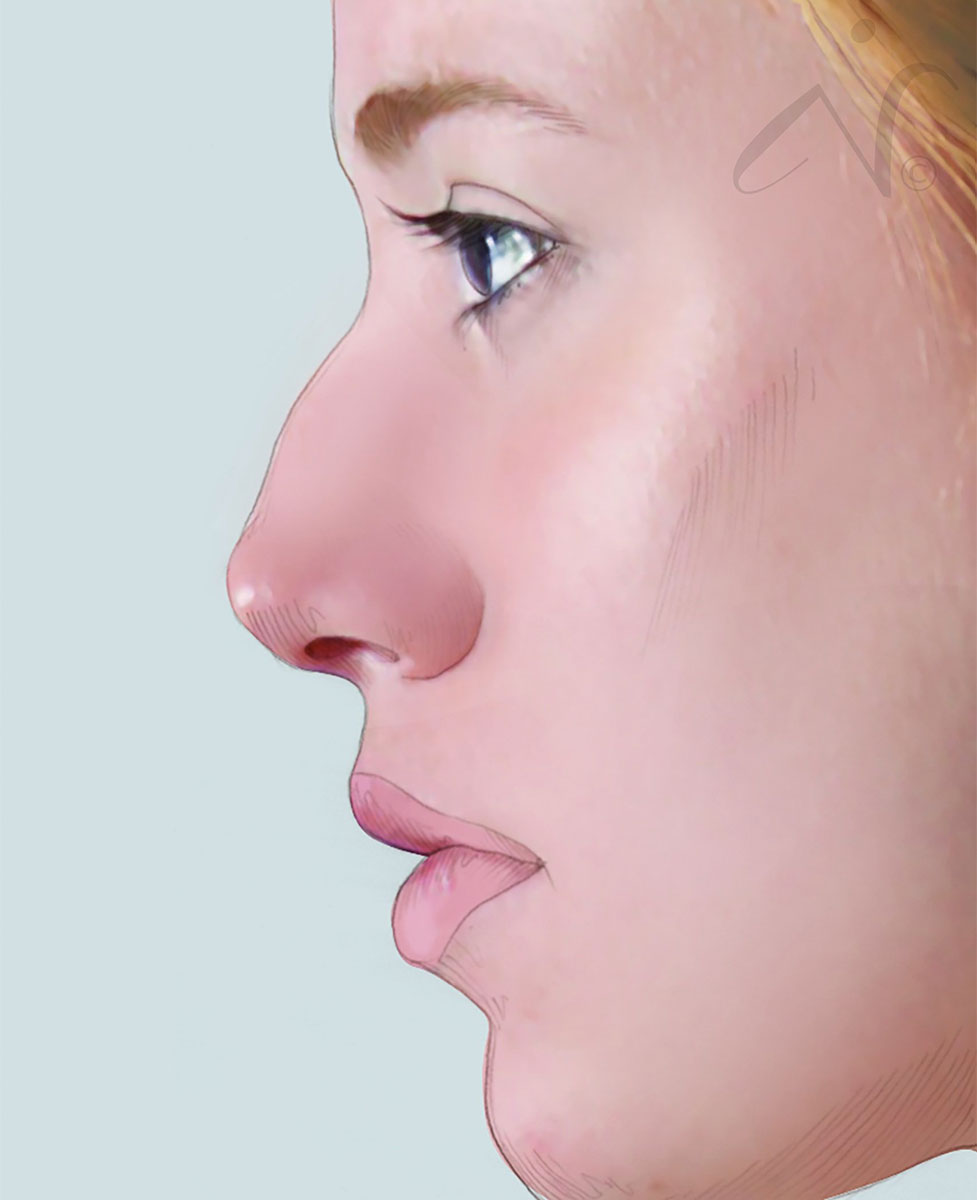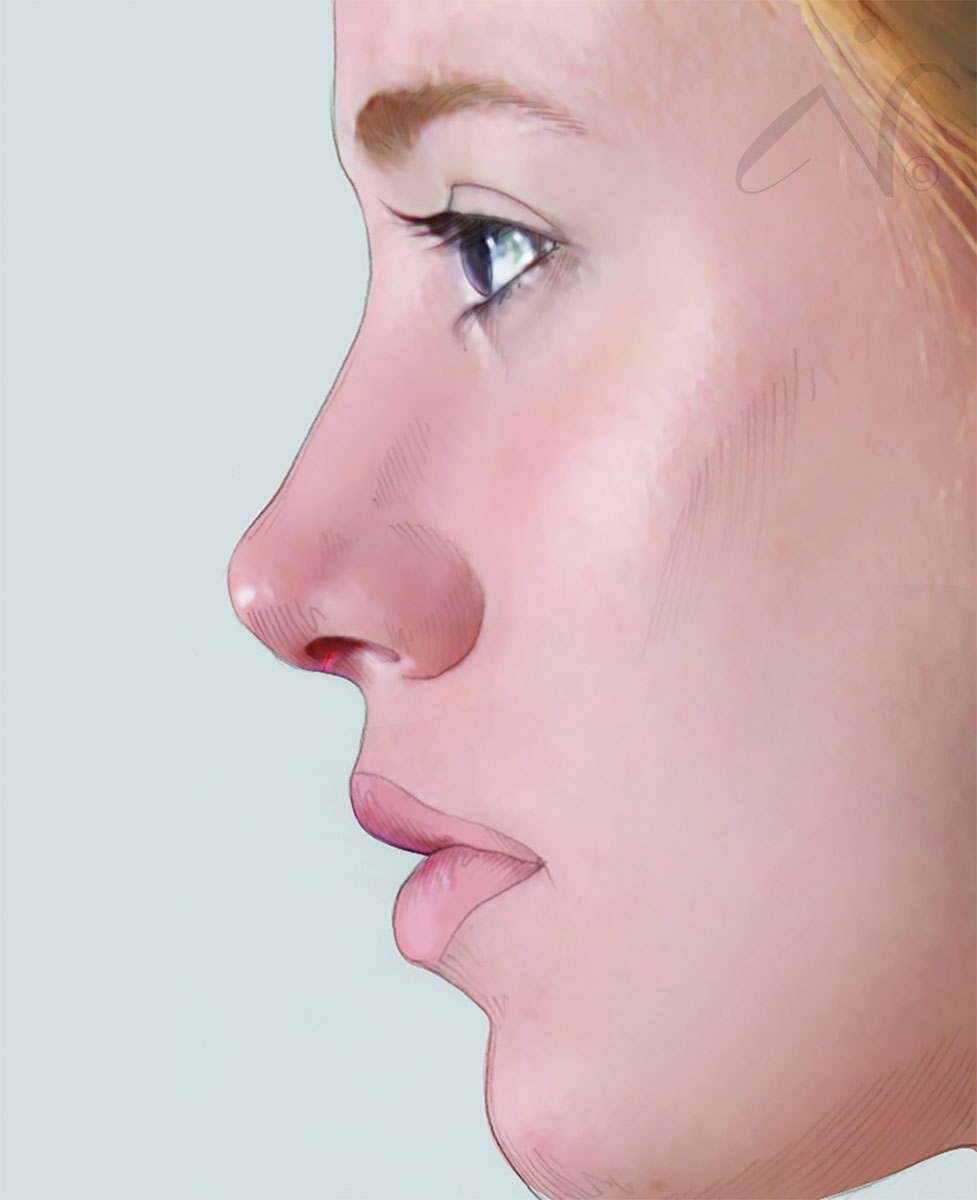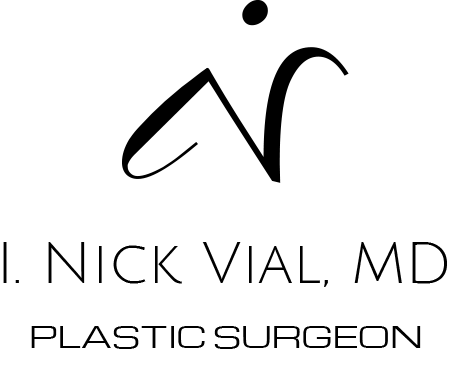The nose provides balance and symmetry to the face. Humps, deviations, and contour irregularities are hard to disguise, making minor differences noticeable. Rhinoplasty is a functional and aesthetic operation. The goal with any procedure, but especially with our rhinoplasty in Bend, is to achieve a natural, balanced look while maintaining function.
What is rhinoplasty?
Rhinoplasty, also known as a nose job, is a functional and cosmetic surgery that changes the shape of the nose. Dr. Vial makes strategic incisions under the base of the nose or inside the nostrils to modify the bone, cartilage and skin.

How does rhinoplasty work?
The nose can be divided into horizontal thirds; irregularities can occur in each section of the nose and can be corrected with surgery.
- The upper third of the nose is the bony nose which is hard to the touch. The bony nose can be wide, narrow, shallow or deep.
- The middle third of the nose is the cartilaginous nose. This cartilaginous nose can be wide, narrow, humped, depressed or curved.
- The lower third of the nose is the tip. The tip of the nose can be boxy or narrow.
Long, short, crooked, under or over projected noses can be corrected using techniques that transverse the thirds to give a balanced, natural result. In addition to aesthetic concerns, many patients have breathing issues. These issues can lead to mouth breathing and a nasal-sounding voice. Airflow can be obstructed at multiple points in the nose and can be addressed with surgery.
What does rhinoplasty treat?
- Crooked nose (deviated septum)
- Prominent hump
- Upturned or down turned nose
- Bulbous tip
- Pinched tip
- Hooked nose
Who is a candidate for rhinoplasty:
In general, candidates for rhinoplasty in Bend:
- Are in good physical and mental health
- Do not have underlying medical conditions that preclude surgery
- Are non-smokers or are willing to stop smoking one month before and one month after the procedure
- Do not use nicotine products, or are willing to stop using products one month before and one month after the procedure (gum, chews, patch, vape)
- Are not exposed to second-hand smoke
- Have realistic expectations from the surgery
- Want to change their nose shape or correct functional concerns, such as a deviated septum


How is rhinoplasty performed?
Your rhinoplasty journey will start with a consultation with Dr. Vial. He will listen to your concerns and expectations, examine your nose, and inform you about your rhinoplasty options. Dr. Vial creates a customized treatment plan for your rhinoplasty to ensure results that address your specific goals.
Rhinoplasty is performed as an outpatient procedure, usually under general anesthesia. The day of surgery, Dr. Vial marks your nose and reverifies the planned scars with you. Once you are under anesthesia, Dr. Vial makes concealed incisions on your nose in line with your surgical plan.
Depending on your specific requirements, Dr. Vial may perform one of the following rhinoplasty techniques:
- Closed Rhinoplasty: The surgeon makes small incisions within the nostrils to make the necessary adjustments. This type of surgery reduces the recovery period, and the incisions are hidden within the nostrils.
- Open Rhinoplasty: The surgeon makes a small incision under the columella, the strip of skin between the nostrils. This allows the surgeon to pull back the skin and modify the underlying bone and cartilages.
- Liquid Rhinoplasty: Instead of a surgical procedure, some patients can have good results with filler injected into the nose. Filler can be used to camouflage humps, divots, and/or contour irregularities. This procedure can be done in the office in minutes.
What is the recovery process after rhinoplasty?
Rhinoplasty in Bend is a surgical procedure, and, like all surgeries, its long-term outcome depends on how you recover in the months after the procedure. Dr. Vial will provide a step-by-step list of recovery guidelines that you must adhere to strictly to ensure a smooth recovery process.
You will have to wear an internal and external nasal splint for 8 days to minimize swelling and maintain your new nose shape. This might cause some nasal congestion. You may have external sutures under your nose that will be removed after 8 days. You’ll also notice considerable facial swelling and bruising, which will gradually dissipate in 2-4 weeks. Most patients can resume work in 1-2 weeks, and light exercise in 4-6 weeks. The results of the procedure will be evident once the nose splint comes off, but it may take 1-2 years for your nose to settle completely into its new shape.
What are the risks of rhinoplasty?
Dr. Vial prioritizes safety above all else and performs your rhinoplasty using the safest surgical techniques. He only works with board-certified anesthesiologists and certified nurses to ensure optimal and consistent results. However, all surgeries, including rhinoplasty, carry inherent risks that Dr. Vial will discuss during your consultation.
The complications unique to rhinoplasty that are reported nationally include, but are not limited to:
- Asymmetry
- Graft exposure (rare)
- Nasal septal perforation (rare)
- Nasal airway alteration (rare)
Why choose Dr. Vial for your rhinoplasty?
Dr. Vial is a board-certified plastic surgeon with extensive training and experience in many procedure, one of which being rhinoplasty in Bend. He has trained at the world’s best institutions where many of these procedures continue to be advanced. He makes safety a top priority and has developed a reputation for beautiful, natural results.

